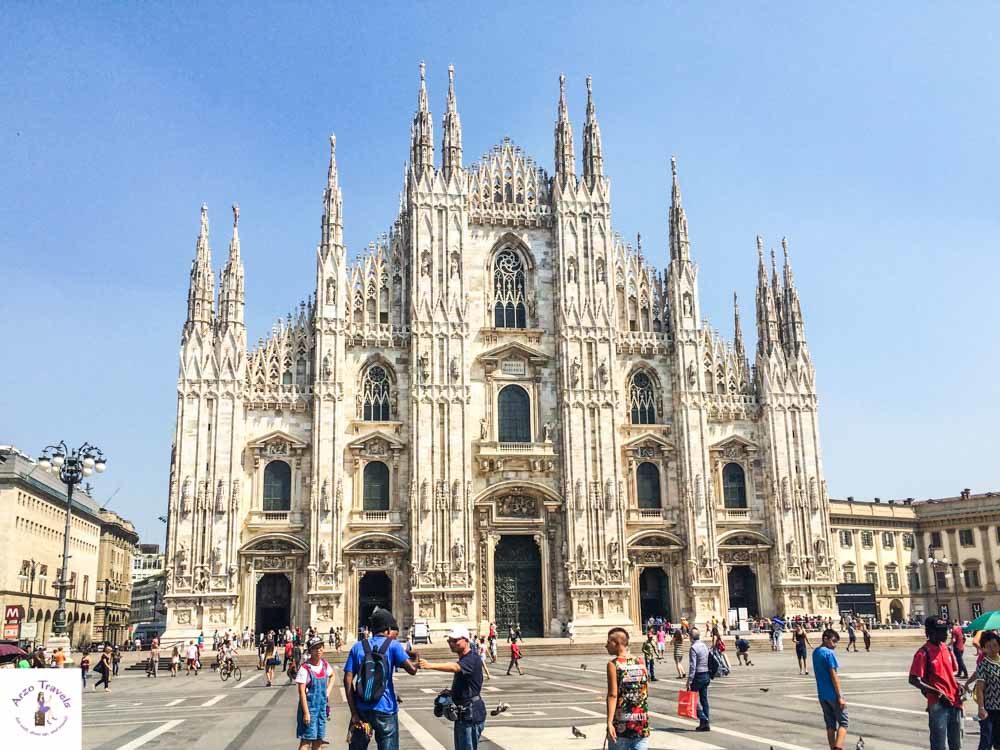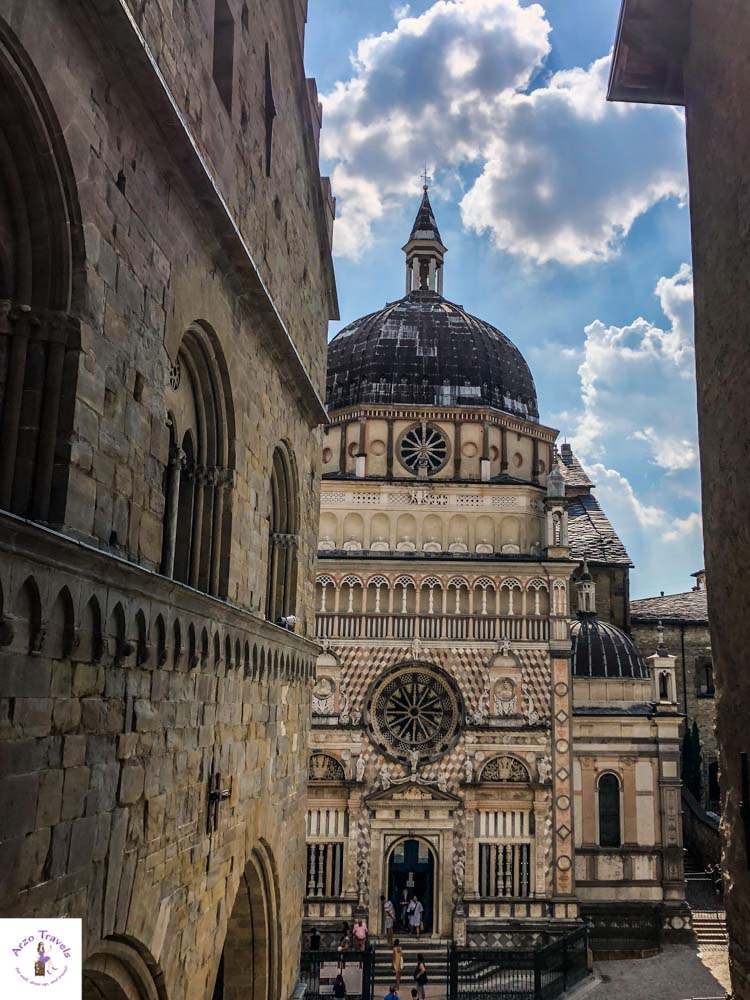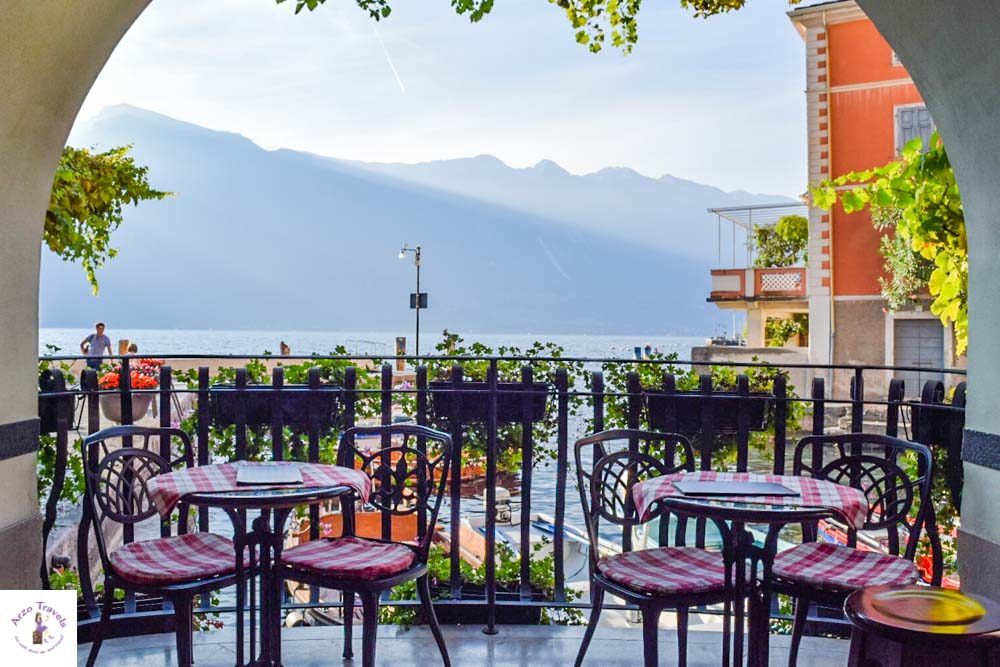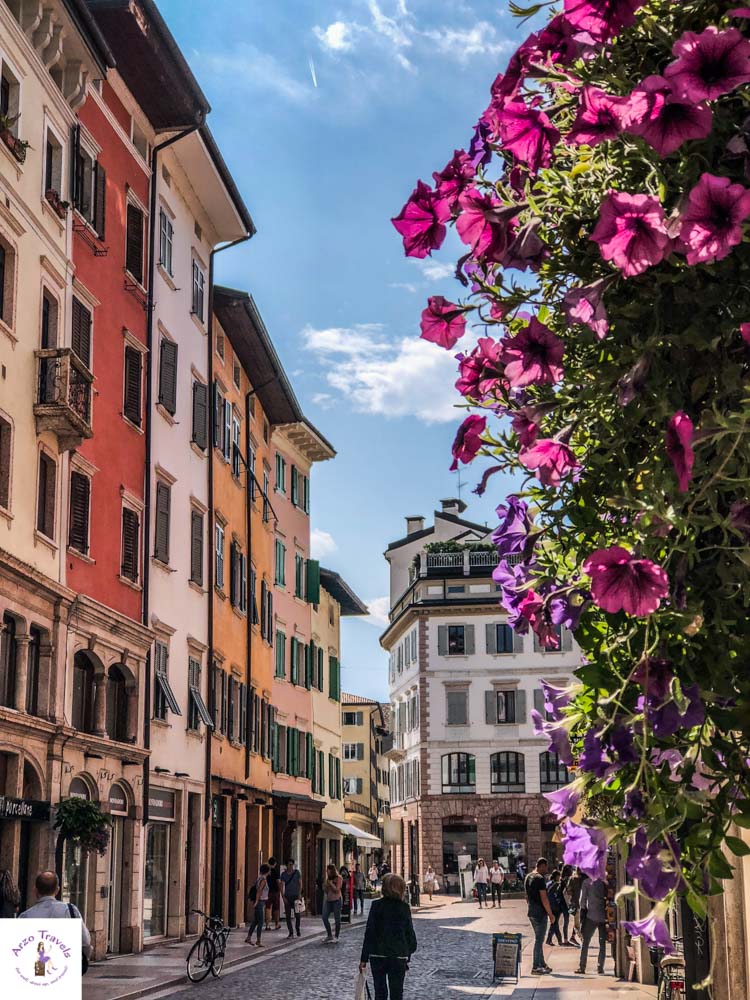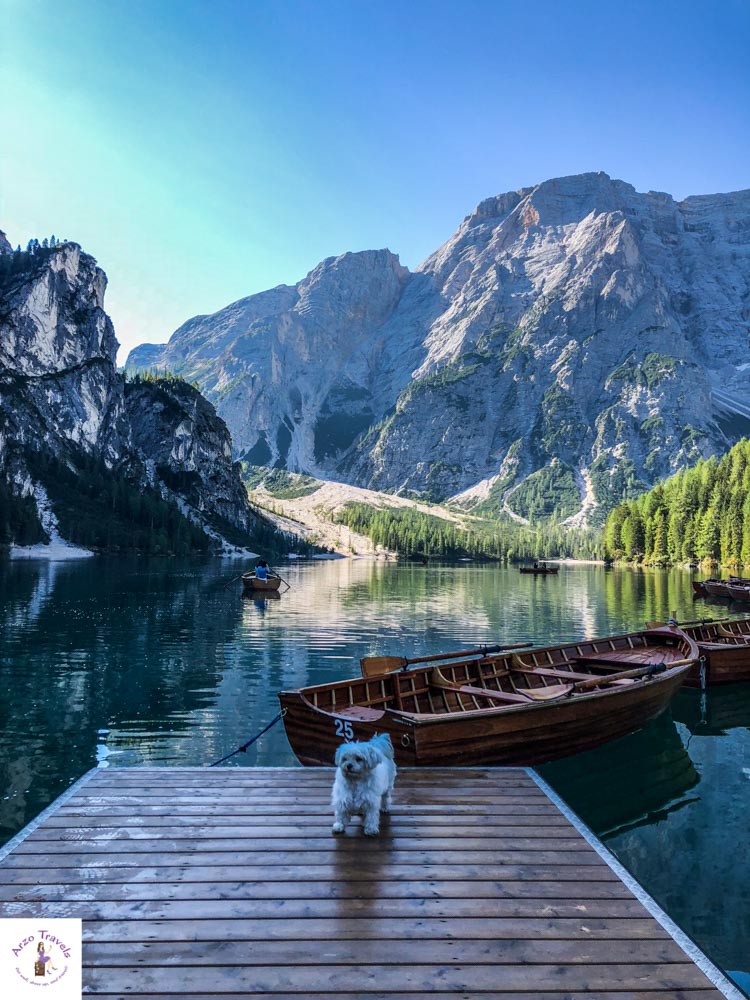THINGS TO KNOW BEFORE TRAVELING TO ITALY
Are you planning your first trip to this gorgeous country and are now wondering about the best travel tips for Italy? Then this post is for you – here are the most essential Italy travel tips for your Italy itinerary.
Visiting Italy is always a great idea. There is a lot to love about Italy, and many reasons that it is one of the most beautiful places in the world. Understandably, it gets lots of visitors. Here is what you need to know before going to Italy and important Italy travel tips if this is your first time.
Disclaimer: This post contains affiliate links. This means I might earn a small commission when you buy a product/service via my link (at no extra cost to you). More about it here.
TRAVEL TIP FOR ITALY: LANGUAGE
The main language of Italy is Italian. English is not spoken very well in many parts of the country, but the locals try their best to understand you when you use it. However, don’t worry, most of the hospitality and tourism staff speak English well.
Don’t be surprised if you hear many people speaking German in the northern part of the country or French in Valle d’Aosta region.
It’s best to try to master some basic Italian words to make your visit easier, such as
- grazie (thank you)
- ciao (informal hello)
- buongiorno (good morning)
- scusi (polite excuse me and sorry)
- bello (beautiful)
- buono (tasty)
TIP FOR VISITING ITALY: PEOPLE
Before starting your Italy trip, you should know that the people here are incredibly open and warm-hearted. Don’t be surprised if people come up to you to touch and compliment your children or pets (if you’re traveling with some). Italians are also loud, passionate, and exuberant people, much more so than others (like German or French people in my opinion. Personally, I love it, but some might have to get used to that.
As a woman, you are often approached by men – it seems Italian men just love and appreciate women. So, I don’t read too much into it and you should not do either but don’t be surprised if it happens.
TIPS FOR THE BEST TIME TO VISIT ITALY
If you’re traveling to Italy, you should know that summers can get really hot and crowded. I suggest not visiting in July or August. While Italy is busy all year round, those months are the absolute craziest.
In particular, beware of August 15th and the days around that date: it is a national holiday when most Italian companies close for one or two weeks. Thousands of Italians travel from the cities to the seaside, and even to the mountains and lakes, to escape the heat and enjoy their holidays. This means traffic, high prices, and crowds. You may actually get to enjoy really hot, but relatively empty cities.
Fall and spring are a little less crowded, but the weather is also less predictable.
Personally, if you are totally flexible, I suggest visiting in April and May, or in September or early October. Of course, it depends on where you want to visit and what you want to do, but this is generally a good rule.
If you enjoy winter sports, then you might want to consider December (it always gets busier around Christmas and New Year‘s Eve), January, or even February. The skiing season usually ends around Easter, especially if it comes early in the year. Hotels, restaurants, and even shops in ski resorts may be closed during the spring and the fall.
TIPS ON WEATHER IN ITALY
If you are going to Italy in the winter, be aware that the temperatures can differ by as much as 20ºC (about 40ºF) from the north to the south. Furthermore, northern Italy is wetter than southern Italy; all the cities in the Pianura Padana plain, like Turin, Milan, Bologna, can have some snow and most definitely some fog. Venice in the winter feels really cold because of the humidity. In the south instead, like in Naples or in Sicily, the winter still feels somewhat like spring.
Summer is hot, but there is less weather variation, especially in the cities or on the coast. However, if you plan to travel to the mountains in the summer – for example, to the Dolomites or to Lake Garda – you will still need a jacket in the evenings.
Personally, I never enjoyed the summer times in Italy. July and August are really hot, sticky, and unpleasant – even in Northern Italy. I cannot even imagine what Southern Italy will be like at that time when the temperatures can stay above 30ºC (about 86ºF) even in the evenings!
For a beach vacation, June or September can still be fine. In June the seawater will still be somewhat chilly, while in September it will feel warmer after receiving months of the summer sun. Especially in southern Italy and in the islands of Sicily and Sardinia, it’s pleasant to swim even in early October.
TIPS FOR GETTING AROUND ITALY
Walking is big here, despite the cobblestone streets. After all, this is what you came here for! The medieval atmosphere in the small towns, the grand buildings in the large cities, the long promenades by the sea. The best way to enjoy Italy is by walking.
While Italians will still wear high heels while walking on these roads, I don’t recommend it. A lot of your Italy trip will require walking, especially in the city centers and old towns, so good shoes are necessary. My tip for your trip is to bring along stylish yet comfortable shoes that you can walk around in all day. You want to avoid thin soles (like ballerinas or sandals): you may feel like you’re in a movie, but your feet will make you regret that choice very quickly.Tip: pack some plasters in your handbag, in case you get a blister.
TIPS FOR PUBLIC TRANSPORTATION IN ITALY
One of the things you should know when visiting Italy is that public transportation is excellent. Okay, not everywhere in Italy but in many areas. It is reliable and a great way to get around – much better than in Germany.
The two main railway networks in Italy are Trenitalia and Italotreno; furthermore, there are small local companies that run on specific routes. If you want to travel by train on a longer route with the fast “Freccia” trains, consider booking in advance.
There are a lot of bus companies running up and down the country; in the highly touristic areas, extra lines are activated in the high season. A large and international bus company is FlixBus.
So, take advantage of the buses and trains to save money and the hassle of driving. Just make sure you get to the right station in the cities where there are multiple main stations (e.g. Venice Santa Lucia Train Station is really in Venice, while Venice Mestre Train Station is in the town of Mestre, the last city on the ground before the Venice lagoon).
Tip: If you buy a paper ticket, remember to validate your ticket BEFORE you get on a train, at the machines in the underground tunnels, or on the tracks. You must do this before riding, otherwise, the ticket inspector may fine you.
Driving in Italy
If you are visiting Italy and plan to drive, be aware that this can be a real challenge. You are often not allowed to drive in certain areas called ZTL (like city and town centers), even if your GPS sends you there. Unfortunately, the signs aren’t always super clear, or the areas are off-limits only on specific days or at specific times. If you do drive somewhere you shouldn’t, you will receive a fine at home. Not a nice souvenir of your trip to Italy.
Driving can be fun in Italy, but it can also be a horrible experience. Parking is a pain. Gas is expensive. Traffic can slow you down significantly.
And just the act of driving in Italy can be frustrating and a little nerve-wracking. For instance, in the north, you have to contend with narrow mountain roads where people pass you at high speeds. Fender benders are not uncommon. In the summer, there are often road works, while in the winter the snow makes the roads even more narrow and dangerous.
Also, driving in Southern Italy can be challenging, as the locals seem to be following a different set of rules – I have only driven in Northern Italy, and believe me, that was time-wracking at times.
Before you decide to road trip Italy, you should know that gas/petrol is costly, as well as parking in main tourist attractions.
Also, there is a toll for many highways, which can get quite expensive. You pay around $8-10 for 100 km (prices vary a bit). You get a ticket when you access the highway (sometimes there are queues at the toll booths) and you pay your fee when you exit, by cash or card. Of course, you can use toll-free roads, but those usually cross lots of towns, so it might take much longer to get to your destination.
These are all great reasons to use public transportation whenever you can. However, I will drive in Italy again because it is still worth it to me. I love the freedom that comes with driving, the possibility to stop when you want or need to (very useful when I travel with my dog), and the scenery is just gorgeous.
Style/Fashion in Italy
Italians are the most beautiful people in the world… in my opinion.
They are incredibly fashionable, especially in northern and central Italy. Even if you think you are dressed up, you may still feel frumpy when standing next to an Italian. Before you pack for your trip to Italy, consider bringing some dressier clothes to fit in with the locals, especially if you plan dinners in nice restaurants or drinks in the evening. If you are looking to have a more casual holiday, this may not be the best location.
Skip the Lines in Italy
Italy is one of the busiest countries in the world when it comes to visitors and attractions – off-season or on. There are always lines and crowds, even under the sun or in the rain – as you can expect in such a beautiful and popular country. Because of this, skipping the line makes the most sense here.
When I buy tickets in advance, I mostly use GetYourGuide. I love that I can cancel up to 24 hours without any costs if something else comes up. And if I want to avoid the lines… Just choose skip-the-line tickets for Venice, Rome, and Florence. You will find most tours and tickets here.
- Click here to check out skip-the-line tickets for Rome
- Click here to check out skip-the-line-tickets for Venice
- Click here to check out skip-the-line-tickets for Florence
With that said, Italians are not very reasonable or logical when it comes to queueing. They don’t really form a line when waiting for the train or the bus: they will all rush to the doors when they open. Be patient and try to follow the flow. Also, stay safe by keeping your valuables in closed pockets.
Electricity in Italy
Electricity in Italy is generally reliable throughout the country. In Italy, the standard voltage is 230 V – you can use your electric appliances if the standard voltage in your country is between 220 – 240 V, so you shouldn’t have any trouble plugging in your chargers and curling irons.
Remember that if you are an American traveling to Italy, you will need to have an adapter since the voltage is different and could fry your electronics. Italy also has some two-pronged outlets (though they are mostly three-pronged these days), so to be on the safe side, buy the adapters with only two prongs.
In general, if you travel with lots of electronics that need charging every night, you may want to bring a multi-plug or power strip. Some hotels, especially old ones, may have just a couple of outlets in their rooms, and sometimes they are behind cabinets or far away from the bedside table.
Water in Italy
Water in Italy is free from the various drinking fountains found throughout the cities and towns. This water is safe and delicious. To save money on your Italy trip, bring along a reusable water bottle to fill wherever you go.
In many restaurants, you can ask for a jar of tap water, which is usually free.
Northern Italy vs. Southern Italy
These two parts of Italy are significantly different, despite being part of the same country. But they are both charming in their own right.
Before you make your Italy itinerary, you should know that Italy’s northern part is renowned for its spectacular mountains and lakes. Southern Italy is famous for its luxurious beaches (and even better food). But each is stunning and worth visiting.
Furthermore, art and history are present in all cities, from the Alps to the tip of Sicily. While you can certainly visit the most famous Italian cities like Venice, Milan, Florence, Rome, and Naples, it is just as wonderful to choose a smaller area, in order to discover one major city and lots of hidden gems.More contained areas are Florence and the medieval towns in Tuscany; Milan, Turin and the excellent vineyards; the marvelous coast from Naples to Capri; the clear sea waters in Puglia; or the Greek heritage sites in Sicily.
Here are my favorite places in Northern Italy – find out which places blew me away!
Siesta in Italy
If you’re planning your Italy vacation, make sure to account for the daily practice of siesta. Italians take a siesta every day from approximately 1 – 4 pm. Many restaurants and shops, especially in small towns or in the south, may be closed during this time, so plan to either take a siesta yourself or pack a picnic to enjoy while you wait for things to open up again.
During the hot summer months, it’s very pleasant to relax at the hotel during these hours. It can be really exhausting to visit a city in such hot temperatures.
However, if you visit major cities like Milan, Florence, and Rome, most establishments are open all day long.
Public Restrooms in Italy
Another piece of important Italy travel info is to always have some change on you in Italy. The public restrooms here charge about 1 euro, so always have some cash on hand for when you need it.
Usually, you can access the restroom of a café or restaurant for free when you make a consumption. It is considered rude to walk in and make your way to the restroom without ordering anything.
Credit Cards / Cash in Italy
Speaking of money, an important thing to know when going to Italy is whether credit cards are widely accepted throughout the country, although American Express is less frequently taken than Visa and MasterCard.
Now, cards in Italy are accepted often, but not always. Sometimes, shops or restaurants will refuse your card if you spend less than 5-10 euros; street food kiosks or establishments in remote places may not accept card payments altogether. For these reasons, I do suggest always having cash on you. It will save you a lot of trouble if you have cash on hand.
The currency in Italy is the euro. Before you travel, make sure you check the fees and commissions for withdrawing euros and for making purchases in euros with your card.
Religious Sites in Italy
Italians take religion very seriously (somehow). With the Vatican located within Rome, there is a heavy Catholic influence on the country and people.
Observe any rules and customs, and you will have a great time visiting these stunning cultural and historical sights.
Restaurants in Italy
Restaurants in Italy have many names. A ristorante is a generic restaurant; a pizzeria is dedicated to pizza; an osteria and a trattoria are usually family-managed and offer traditional local food; a taverna will offer more wine than food.
When dining out at a restaurant in Italy, you will most likely encounter a fee called a “coperto”. This fee literally “covers” the cost of the tablecloth and napkins, plates and cutlery, and usually some bread. It will depend on where you are dining, but usually, it is between 1 and 3 euros per person. If this is included on your bill, then you don’t need to leave a tip. Sometimes, a service fee is also charged.
When it comes to opening hours, restaurants in touristy areas will be open almost all day. The peak hour for Italians in the North is approximately 1 PM for lunch and 8 PM for dinner; in the South, it’s usually a bit later. Avoid the crowd by having lunch and dinner a little earlier than that.
If you behave particularly nicely, or if your total bill is particularly high, the waiters may decide to offer you some grappa or limoncello, the local liqueurs, as a goodbye drink.
Food in Italy
What more do you need to know about Italy? Well, about the food, of course!
There is a big difference between food in the north and the south of Italy. The south has, overall, a healthier fare, which is more my kind of food. There is more emphasis on meats and cheeses in the north – so not vegetarian-friendly, let alone vegan-friendly.As for pizza, I have heard that it is best in Naples, located in Italy’s southern part. But I have had good pizza in the north, too. For your own safety, do not try to order pizza with pineapple!
Some people consider breakfast the most important meal of the day – but not in Italy. Breakfast is not a big deal here: Italians like their breakfast sweet, which usually means coffee and a croissant or a similar pastry. If you decide to have breakfast at the cute café around the corner from your flat, this is what you will find.
Even if you go to a restaurant (unless it is a big chain), you will only have a few small cakes and sweets for breakfast. Only hotels with international clients will offer something more, like eggs, ham, and vegetables. If this is very important for you, make sure you check before you book your accommodation.
Wine in Italy
Although I don’t drink, Italy is the perfect place to visit if you love wine.
As the largest producer of wine globally, there are tons of vineyards for you to visit during your Italian holiday. Some of the best and oldest wines come out of Italy, especially reds. You are absolutely in wine heaven here.
Even without visiting vineyards, you can discover many unique wines during an aperitivo at a nice wine bar. After work and before dinner, from 6 or 7 pm, Italians like to enjoy a glass of wine or a beer with olives and snacks; in large towns, bars offer large buffets for aperitivo, at a fixed price. This is the perfect occasion to taste local wines and experience a very Italian tradition.
P.s. I recently stayed at a wine relais in Tuscany – check out my review here.
Gelato in Italy
Bad gelato supposedly exists in Italy – but I have never had any. My Italy travel advice for you is to try this sweet and indulgent treat while you are exploring this fun and colorful country.
A famous brand of gelato in Italy is Grom: they source very unique and local ingredients to make delicious gelato. Their gelateria, ice-cream parlors, are usually located in the centers of large towns.
Some traditional Italian gelato flavors that you should try are Sicily pistachio and Piedmont hazelnuts; each region boasts local ingredients and unusual combinations.
If you are lactose-intolerant or vegan, you should still be able to taste fruit-based gelato, made with water instead of milk.
Coffee in Italy
Good news if you are a coffee drinker – Italians love coffee! It’s a ritual, just like aperitivo.
First of all, coffee is meant to be a quick stop. Many Italians take a short break from work, head to the closest café, order an espresso at the counter, drink it in 2 sips, and that’s it! Espresso is really small and energetic. Of course, you can also sit at a table and rest, but once during your trip to Italy, you should try this Italian coffee ritual.
On the other hand, if you want to take a longer break, just order a longer coffee: a foamy cappuccino! Cappuccinos are rather cheap in Italy, about 1.50 to 2.50 euros. But it’s important to know that in Italy, they only drink it until 11 am. This is because it contains milk, and milk is considered a morning-only drink. They will look at you weirdly if you order a cappuccino after lunch.
So, my tip is to have a vegan cappuccino – have a plant-based drink alternative and you can still enjoy a great drink without being weirdly looked at.
Hotels and Accommodations in Italy
You should know before staying in Italy that many hotels charge a city tax. The fee is usually 1-3 euros for each room or a small percentage of the room price, on top of the hotel price. This city tax may not be included in the price of the room when you book, however. It is usually written in small letters, and it has to be paid at Reception instead of online.
Personally, I almost always book with Booking.com. I prefer them because they allow me to cancel last minute, most of the time without penalty (yes, flexibility is crucial to me). Click here to check out prices via Booking here.
One very important thing to remember if you travel to Italy in the summer is to check if your accommodation has air conditioning. While it is very common right now to have air conditioning in hotel rooms, some historical buildings may not have it. If it’s very important to you, check in advance.
Another thing to coordinate if you plan to rent a car in Italy is to check the parking availability at your accommodation (and in the cities, you plan to visit). You don’t want to rent a giant SUV which won’t fit in the narrow alley leading to your cute hotel in a medieval town.
If you travel during the winter, 4×4 and snow tires are a must.
Hidden Gems in Italy
While Italy is one of the most popular travel destinations in Europe (or probably worldwide), there are a few hidden gems that tourists do not overrun.
One of them is Trento – another one is Bergamo, but no worries, there are many more places that are still underrated and less busy. Check out my favorite hidden gems here.
Especially if you plan to visit very popular and crowded cities, consider taking a break with a day trip or a night in a peaceful Italian town.
Traveling With a Dog in Italy
One of the best news for dog lovers is that Italy loves dogs, so my best Italy travel tips include this tip: Traveling with a dog in Italy is great – at least if you have a smaller dog.
First of all, Italians love dogs and show their affection. My dog is not always a fan of it (sometimes he is), but I am happy people react so friendly to my dog as a proud dog mommy.
Second, most hotels do not charge extra if you bring a dog. A big, big plus (unlike many other countries where you have to pay up to 20 or even 30€ A NIGHT for bringing your dog).
Third, you can bring your little dog even into some castles or museums – this might not always be the case, but at least quite many places allow it when you have your dog in a bag or if you carry him (this is not common in Switzerland or Germany, etc.). Also, most supermarkets and restaurants will allow small dogs in.
Usually, you can take your dog on boats and cable cars, but you need to bring a muzzle (even the smallest ones need a muzzle in closed places, but this is somehow understandable since the smallest are often the most dangerous).
Just like anywhere else, it is required to clean up after your dog.
Solo Female Travel in Italy
I have visited Italy many times – sometimes with friends but also with my parents. But I also often visit Italy solo (okay, my doggy is sometimes with me), and I love it. Yes, men are sometimes very flirty, but I never felt uncomfortable and harassed.
People are amiable, and it is easy to have conversations with locals. There are a few aspects to keep in mind when traveling solo, but in general, I think Italy is a GOOD country for solo (female) travelers.
READ MORE:
- Dolomites: 1-week itinerary
- The most beautiful lakes in the Dolomites
- My 7-10 day Northern Italy itinerary
- Verona in 1 day – what to do and see
- Lake Garda itinerary
- Burano – the most colorful place in the world
- The best things to do in Rome
Italy is an interesting and diverse country. There is so much to see, taste, and try here. Hopefully, this post has helped you learn what you’ll need to know before visiting Italy, offering valuable tourist tips and important information to make your trip the best it can be.



